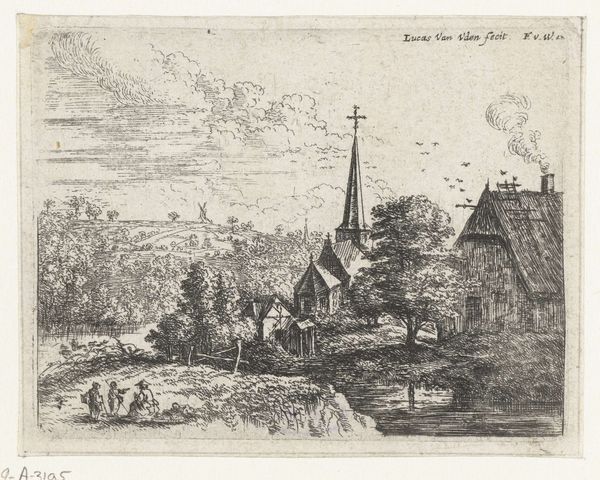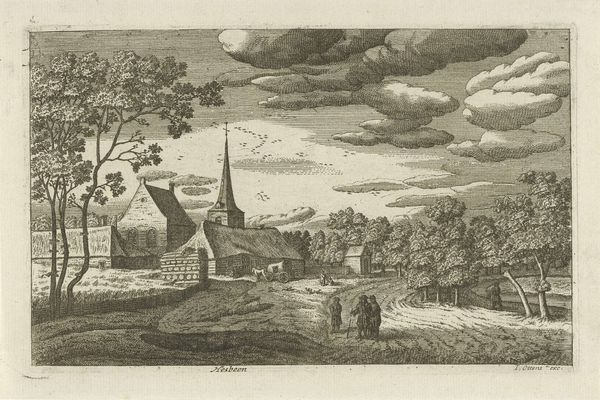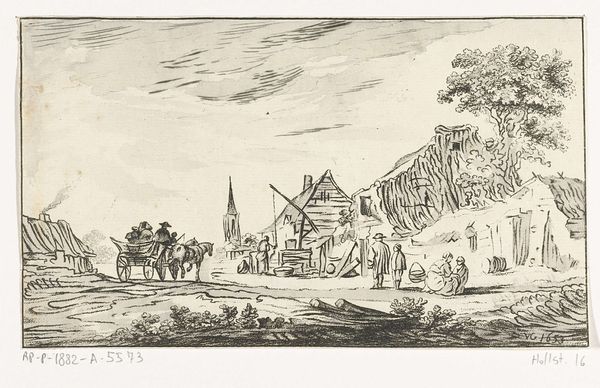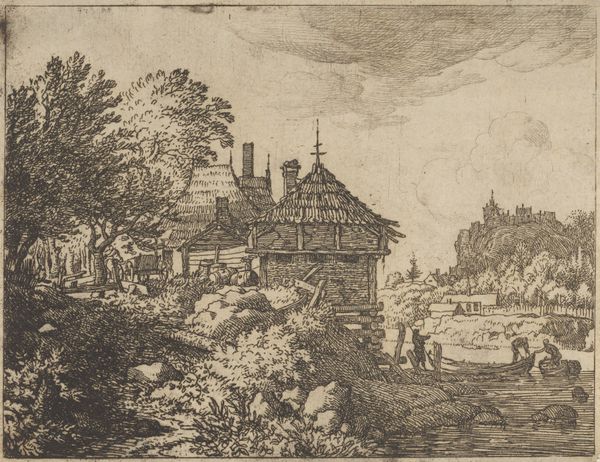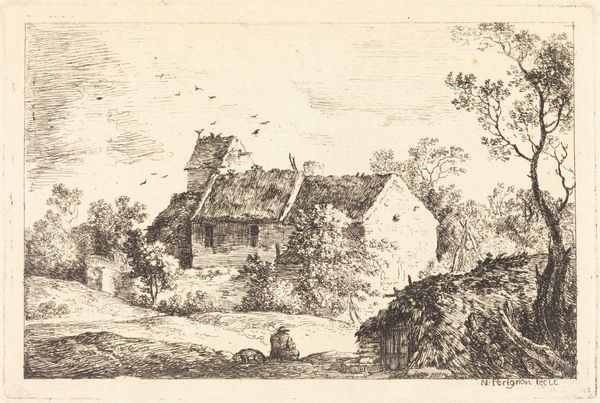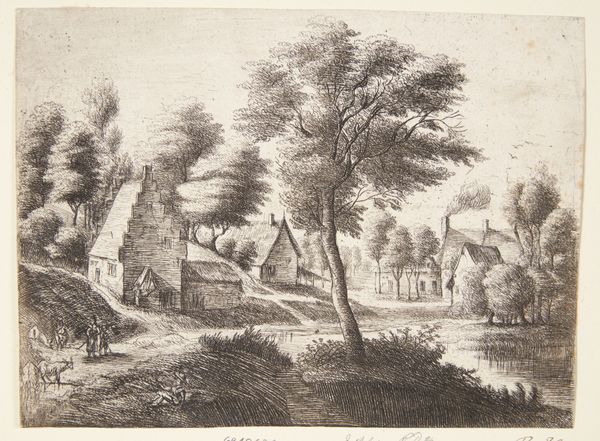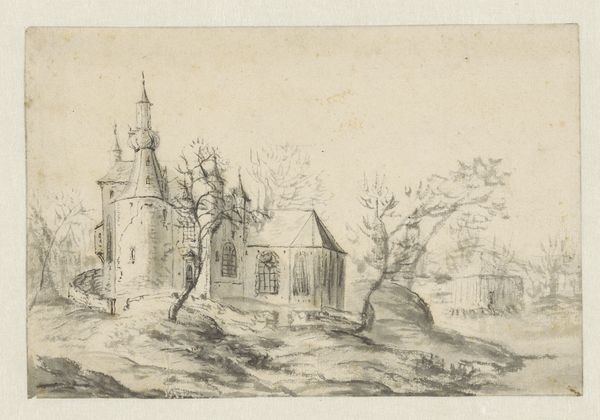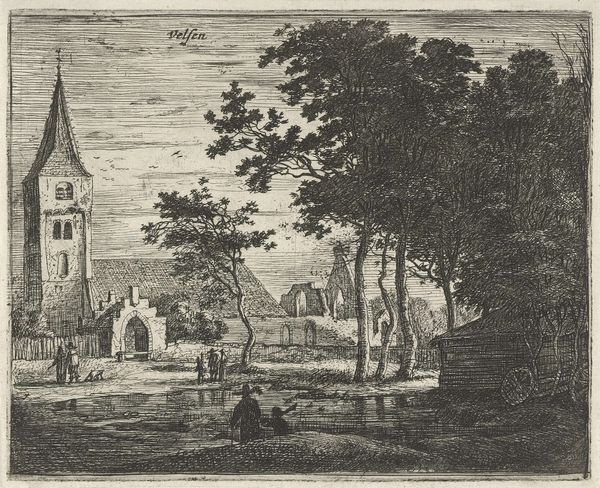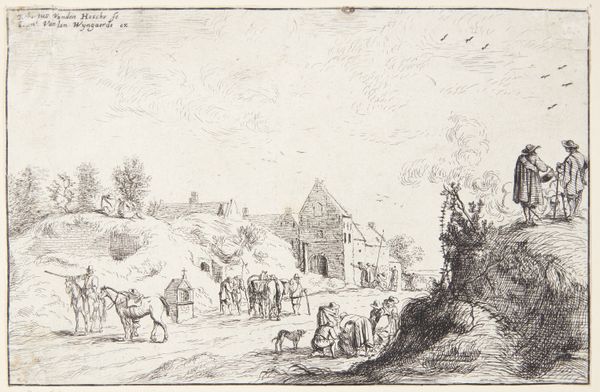
drawing, print, etching, paper
#
drawing
#
dutch-golden-age
# print
#
etching
#
landscape
#
etching
#
paper
Dimensions: 95 × 145 mm (image/plate); 100 × 150 mm (sheet)
Copyright: Public Domain
Editor: This is "The Steeple in the Village by the Sea," an etching by Anthonie Waterloo. I’m really drawn to how detailed it is for a print. You can almost feel the textures of the buildings and the water. What stands out to you when you look at it? Curator: What I see is the intersection of labor and land ownership rendered through the very specific technology of etching. Waterloo wasn’t just representing a village; he was participating in a system where land was increasingly privatized, and images like this were commodities, both reflecting and reinforcing social structures. Editor: So, it's not just a pretty picture; it's part of the economy back then? Curator: Exactly! Think about the paper itself. Where did that come from? Who was making it, and under what conditions? And then consider the labor involved in creating the etching plate. Waterloo isn't just an artist; he's a producer within a specific economic framework. The availability of these images also shaped how people viewed the landscape, encouraging particular ideals of ownership. Editor: That's fascinating. So by focusing on the materials and processes, we see how the artwork fits into a broader economic and social context? Curator: Precisely. We can challenge the traditional art-historical focus on individual genius and aesthetic value by understanding how this print was made, distributed, and consumed, reflecting and impacting material conditions. What's really groundbreaking is to recognize that the 'art' object embodies real labor that’s often hidden in traditional narratives. Editor: That gives me a whole new perspective! It is no longer just about what's shown but how it came to be. Curator: Indeed. Shifting our focus to the materials and labor involved transforms our understanding. I found that to be extremely valuable.
Comments
No comments
Be the first to comment and join the conversation on the ultimate creative platform.
